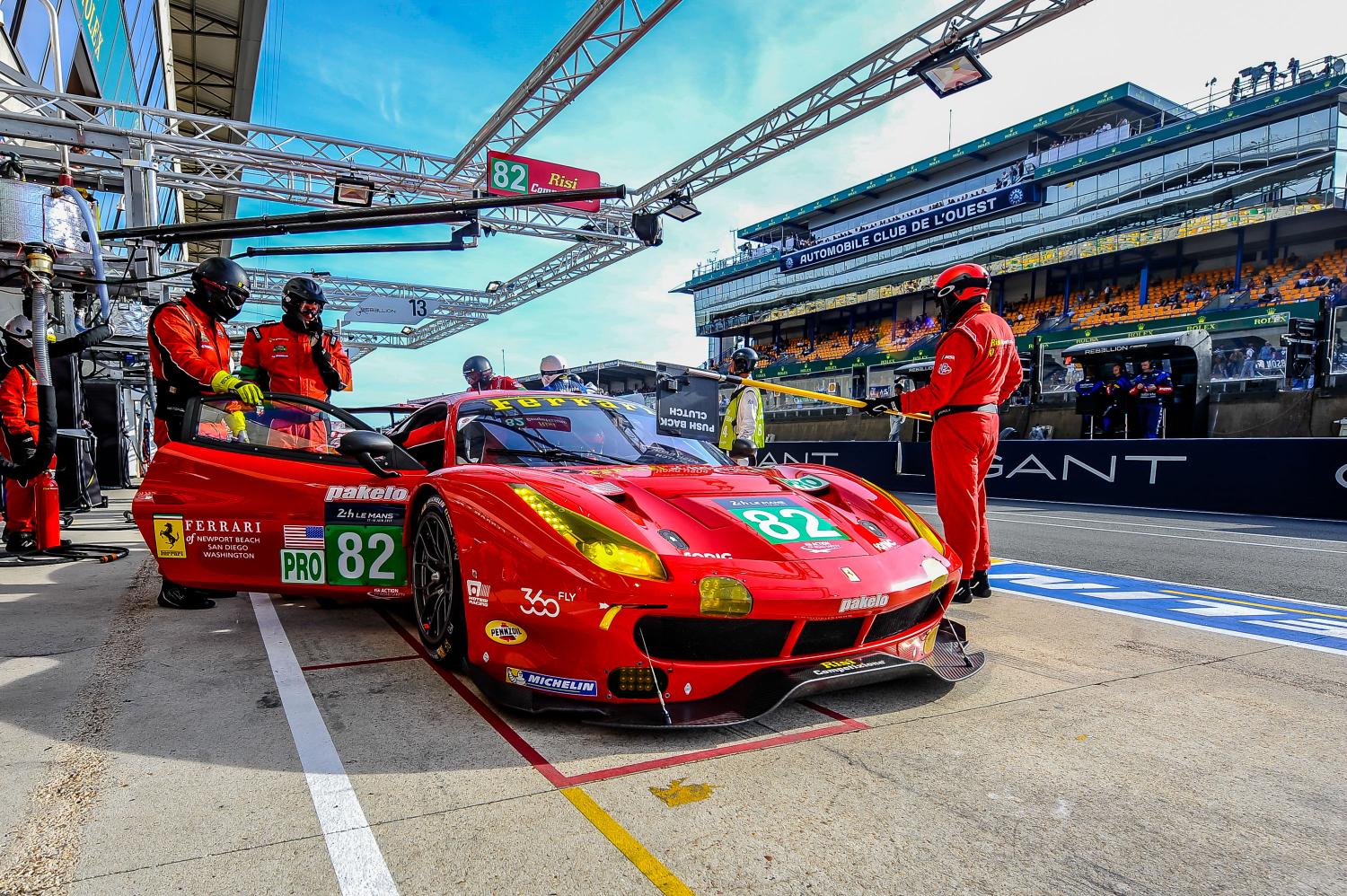The IMSA and FIA WEC rules for pit stops are very different. Some of the biggest differences include: the separation of fueling and tire changes (in IMSA they can be performed simultaneously), the fact that the car needs to be turned off (in IMSA the engine can continue to run), and the number of wheel guns allowed in the pit box at the same time (in IMSA it is two, at Le Mans, only one).
The separation of fueling and tire changes at Le Mans, make the tire change especially important—the whole stop depends on it.
“What we do, is on the inside, the front guy will take the nut off, then step back (so the second gun can change the right rear),” Risi Engineer Rick Mayer said. “The guy with the gun will run around the car and do the outside front and outside rear, the other guys are following him, putting the wheels on and taking them off. It’s choreography. As the outside person is running around the back of the car, when he gets within a couple feet of the line, you’d drop the car and start it simultaneously.”
Keep in mind, during that process only one wheel gun can be in the pit box at a time, though teams are allowed to use two different guns for the stop. The wheel gun operators must watch each other to make sure they’re not in the box at the same time.
Wheel nuts on the left are right-hand threaded, while wheel nuts on the right are left-hand threaded. This ensures the nuts are tightening under braking while out on course. For Risi, it’s ideal to have a right-side wheel gun and a left-side wheel gun, but at Le Mans, since the wheel guns will be used to remove and tighten wheels on both sides, they must use what Mayer calls “50/50 guns,” which are “not optimal.”
At all IMSA tracks there is a knee-high wall that is the barrier for those who are in the pit box, versus those who are not. At Le Mans, as with all other WEC tracks, there is a line just outside of the garage that determines who’s in or out of the pit box. In IMSA, the crew member’s feet determine if one is over or behind the wall. At Le Mans, it’s the equipment that must stay behind the line.
Speaking of equipment, in IMSA, cars can leave the pit box with equipment still laying in it (just don’t run over anything or you’ll get a penalty. At Le Mans, the box must be clear of all equipment and persons before the car can leave.
Obviously, the Risi team must do a lot of practice to learn their new pit stop choreography, but this in itself presents a problem for the Texas-based squad; too much practice, and your crew could hurt themselves.
“You can only do so many practice stops in succession,” Mayer said. “The wheels are heavy, the guns are heavy, everything is heavy. You can do three or four, but then you have to wait for a while. We’ll come in, in the morning, and do some early, then do some at lunch, then do some in the evening.”
Mayer reports that two of his crew members have already hurt themselves this weekend, completing perfectly normal tasks. He’s had to fly in a back up crew member at the last minute and work him into the practice stops, so they have a backup in case anyone hurts themselves too seriously.
“If you have multiple cars, as long as they don’t come in at the same time, you can physically use the same crew," he said. "There’s some backup there. We need a secondary plan.”
Risi Competizione’s #82 Ferrari 488 GTE will start 11th in LMGTE Pro on Saturday.
No matter where they finish, they’ll have to relearn their IMSA procedures for their next race in two weeks (June 30 – July 2) at Watkins Glen International.

